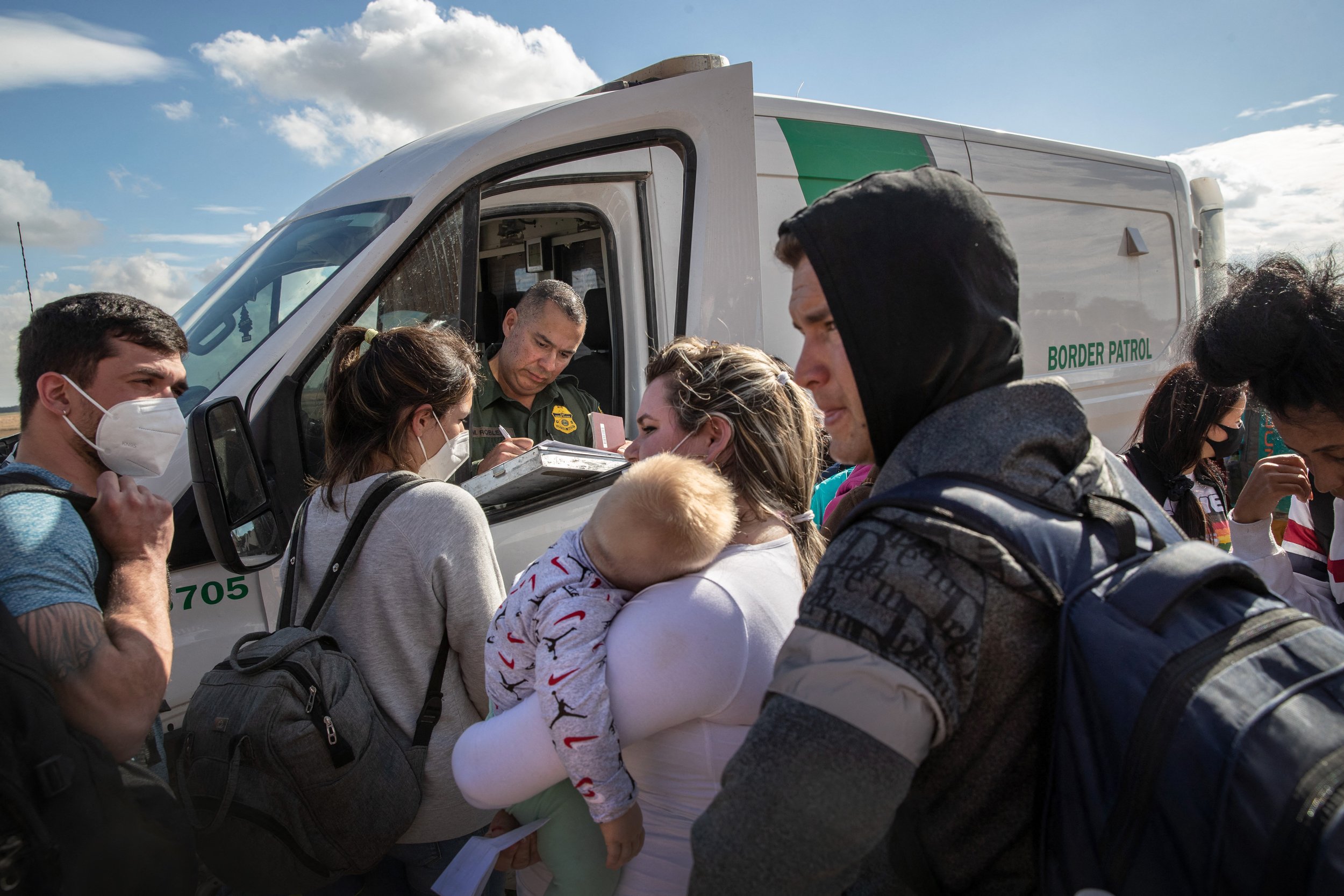The Problem with ‘Terrorism’ Reporting
Andy Mills and Rukmini Callimachi hold a Peabody Award on May 18, 2019 [AP/Brad Barket]
By Sana Saeed
The New York Times issued a correction last week to one of its golden geese: the podcast series Caliphate, which follows “terrorism” reporter Rukmini Callimachi on “her quest to understand ISIS.”
According to the Times, certain episodes of the series did not meet its editorial standards. This correction came two years after reports that the character at the heart of the series, who was given the moniker “Abu Huzayfah,” had lied about his involvement with ISIS.
He had, in fact, lied about everything; he had no connection to ISIS at all and was arrested in September for having perpetrated the hoax.
Despite the paper acknowledging that “certain” episodes did not meet its standards, and despite the issuing of a correction, – the show was not retracted. Callimachi herself was simply taken off the “terrorism” beat and reassigned.
So, what’s going on?
Caliphate, like most journalism around "terrorism" and "Muslim violence" or "radicalization," relied on unconfirmed sources, displayed disregard for usual ethical and factual considerations in reporting, and uncritically accepted the Global “War On Terror” (GWOT) narrative. The latter, in particular, introduced us to a lexicon of terms and ideas that reinforce the concept of a looming, amorphous threat of brown and Black bogeymen from the lands of sand and oil.
As an example, take the term “radicalization” – there’s no agreed upon criteria for how to define this term for any group. State bodies like the FBI have long exploited that ambiguity, and the media has followed suit. Think back to that moment when a horde of reporters in 2015 went into the San Bernardino shooters’ home and examined innocuous Muslim ritual beads and books as proof of brewing “radicalization.”
The Caliphate project and Callimachi's work were simply well-produced exercises in fearmongering rooted in racist tropes of Muslim/Muslim-adjacent subjects – even if you take out the fraudulent story of Shehroze Chaudhry, aka “Abu Huzayfah.”
Very rarely, if ever, does this strain of journalism focus on anything other than so-called “radical Islamist violence.” Other forms of nonstate political violence such as white nationalist or militias will be categorized under other beats. In doing so, nonstate violence by groups and individuals identified as Muslim or using language derived from Islam to package their political goals (whether or not it’s “actually Islam” becomes irrelevant) is pathologized; it becomes something unique, cosmic and disconnected from the historical circumstances and material conditions.
And in this process, there is a mass dehumanization of Muslims.
Violence – state or nonstate – doesn’t emerge in a vacuum, but “terrorism” journalism treats it as though it does. Such reporting does not question its own propaganda role. Simply put, journalism that focuses on terrorism rarely contextualizes the violence. And contextualizing isn’t justifying – it’s understanding exactly the thing you’re in a “quest” to understand.
The work of journalists doesn’t exist in a vacuum; what we do ends up impacting domestic and foreign policies and support, among the public, for those policies. It fuels programs and policies that target Muslims as threats. And that has an impact on human life, usually abroad but here at home too.
Take, for example, the Countering Violent Extremism program, initiated under the Obama administration and based off of similar European projects. For a long time, the program specifically targeted the spiritual, political and social lives of American Muslims in hopes of thwarting so-called “radicalization” and has been likened to COINTELPRO and condemned by civil rights groups.
Another example, further from home? When a slew of reports started popping up about “what to do” with the children of ISIS soldiers, characterizing them as "ticking time bombs.”
A New York Times headline went so far as to ask (before the paper changed it) if these children were actually children or time bombs.
Within the industry and among its audience, Caliphate was celebrated, and Callimachi was heralded as an incredible reporter who told compelling, harrowing stories about mysterious, amorphous shadows. The show has won prestigious awards, such as the Peabody, and was even a Pulitzer finalist in 2019. The show and the now-debunked story of Abu Huzayfah was even brought up in the Canadian House of Commons, when the Conservative opposition questioned why he was still allowed in the country.
By refusing to retract Callimachi’s work, not apologizing to those impacted and just reassigning her to another beat, the Times unwittingly gave us a crash course in the impunity with which the lives of Muslims are treated in the industry and the different tiers of ethical practices and journalistic skepticism that exist in reporting and fact-checking.
And it is just exhausting.

![Andy Mills and Rukmini Callimachi hold a Peabody Award on May 18, 2019 [AP/Brad Barket]](https://images.squarespace-cdn.com/content/v1/5f21dbb91adde3260d4ba1ef/1609779581543-YWBXY5HFR52C2N88IXS3/callimachi-caliphate-terrorism.jpg)



